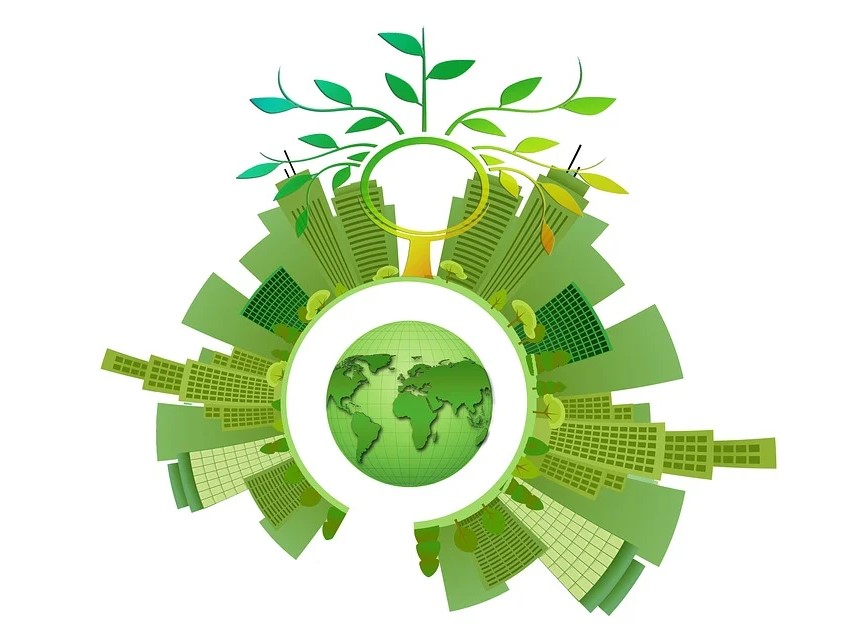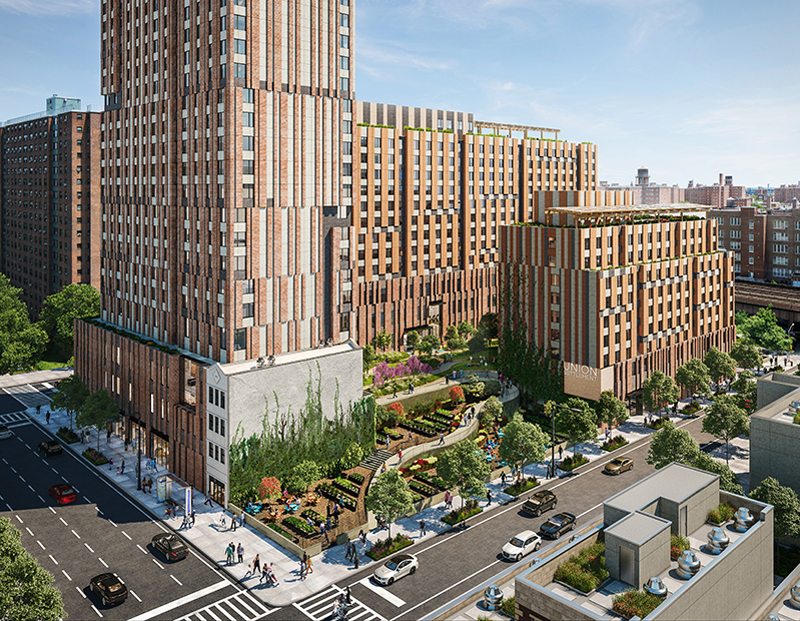Lessons for Cities, Companies Worldwide From ULI
The Centre for Liveable Cities and Urban Land Institute collaborated on a new study—Building Climate Resilience in Cities Worldwide: 10 Principles to Forge a Cooperative Ecosystem.
There is a common denominator between the current health crisis and climate change: To combat either of them, the entire society must mobilize. To mobilize the entire society, a feasible plan must be put in place. The Centre for Liveable Cities and the Urban Land Institute put together a report with practical guidance for city governments, businesses and communities against risks such as rising temperatures, wildfires, droughts, storms, rainfalls and rising sea levels.
The report highlights five coastal cities—Hong Kong, Miami, New York, Rotterdam and Singapore—and their respective strategies and investments, documents international best practices, proposes principles for stronger public-private cooperation and evaluates approaches that are transferable based on a city’s context and risk profile.
Accelerating rates in the recent past
The World Meteorological Organization reported that 2015 through 2019 were the five hottest years on record. Furthermore, the mean sea level increased by more than 3.1 inches (80 millimeters) from 1993 to 2018, a phenomenon attributed to thermal expansion of oceans and global ice-sheet melting caused by higher temperatures. Estimations suggest that the ice sheet in Antarctica alone could cause more than 3.3 feet (1 meter) of sea-level rise by 2100 and more than 49 feet (15 meters) by 2500.
Natural disasters are projected to worsen, and the real estate sector faces serious financial implications. The U.S. Congressional Budget Office estimates that storm-related winds and floods cost the residential sector $34 billion, commercial businesses $9 billion and the public sector $12 billion in losses every year. The record year so far remains 2017, when, during the North Atlantic hurricane season, total storm damages were estimated to top $170 billion. Wildfires present similar outcomes—in 2018, the U.S. recorded some $12.4 billion of direct property damage caused by large-loss wildfires.
READ ALSO: Weathering Hurricanes Amid a Pandemic
Mitigation, adaptation & resilience
Climate change mitigation describes measures that reduce greenhouse gas emissions or enhance carbon sinks. Current methods include switching from fossil fuels to renewable energy, enhancing carbon sequestration through afforestation—establishing a forest or stand of trees in an area where there was no previous tree cover—and reforestation.
Climate change adaptation describes interventions that prevent or moderate the real and anticipated damages caused by climate change. Strategies include building dikes and polders to manage rising sea levels, using natural and artificial shade to reduce the effects of rising temperatures and changing behaviors to cope with adverse conditions.
Combining mitigation and adaptation leads to resilience, which is the ability to prepare and plan for, absorb, recover from, and more successfully adapt to adverse events. The benefits of resilience investments—known as resilience dividends—are reaped both in the short- and long-term, during good times and crises. These include economic growth, job creation and improved social infrastructure, as well as enjoyable public realms, ecological vibrancy and stronger community bonds.
Building climate-resilient cities
There are 10 principles to apply, which can be organized under three themes: envision, empower and execute.
- Elevate resilience as a goal for all sectors and stakeholders.
- Work across space, time and organizations.
- Leverage opportunities to enhance livability.
- Provide transparency through data and knowledge sharing.
- Strive for equity, access and inclusion.
- Spur united action through a common narrative.
- Nurture a culture of collaboration.
- Embody flexibility in approaches and solutions.
- Motivate the market, spur innovation.
- Normalize green finance to fund projects.
Envision
One important step is establishing a common vision for a climate-resilient city—one that accommodates a variety of values, navigates different scales and fully leverages opportunities to enhance livability. Typically, across the globe, climate change mitigation measures—reducing carbon emissions—are more popular than adaptation strategies—preparing for climate impacts. Awareness is essential among stakeholders and is growing, allowing them to determine their priorities and communicate their values. The best solutions are curtailed to meet specific local needs and developed together with the people most affected.

Marta Schantz, Senior Vice President, Greenprint Center for Building Performance, Urban Land Institute. Image courtesy of Urban Land Institute
“At this point in time, considerations around sustainability and energy efficiency are considered table-stakes for any competitive Class A development. First and foremost, energy efficiency and sustainability make good business sense by reducing operating costs and resulting in a strong ROI over the life of the asset. Beyond that, attention to sustainability in developments helps garner community goodwill, earns city incentives and approvals, improves competitive advantage, draws higher-quality tenants and attracts a wider set of investors,” said Marta Schantz, senior vice president, Greenprint Center for Building Performance at the Urban Land Institute. “If developers aren’t yet planning for the environment and climate change, they’re behind the curve,” she added.
New York City’s Economic Development Corp. has incorporated methods to reach a broad array of stakeholders into many development proposals that face climate risk, such as waterfront redevelopments. Citizens of all ages showed up at the company’s events and shared ideas on climate risks, the city’s plans and potential solutions.
Resilience 305—Miami’s resilience master plan—held public engagement sessions that included ethnically diverse communities and economically disadvantaged groups. Public meetings, focus groups and surveys were held over a period of three years and were essential in developing the plan’s resilience strategies and building support.
READ ALSO: Florida’s Take on the Climate Crisis
Financial recognition of physical climate risk, such as insurance or the availability of disaster recovery funding, is another strong topic for debate in the report. For example, insurance providers should look beyond restoring systems and instead identify resilient development strategies that are practical for the building or site.
ULI’s study points out that building climate resilience goes beyond resisting damage to property and infrastructure, it can improve the community and boost the quality of life. One such example is Hunter’s Point South Park in Queens, New York City. The product of a multi-agency collaboration, it includes infrastructure, road improvements and seven residential buildings of 5,000 new units, 60 percent of which are affordable for low- to middle-income families. The waterfront park incorporates nature-based solutions—such as bioswales and marshlands—which serve as a natural form of stormwater absorption during flood events and storm surges and deliver recreational value through a public walkway that doubles as a scenic lookout.
“The sudden shock of COVID-19 has led to a heightened awareness of the concept of resilience, and the ability for cities and societies to bounce back and adapt,” noted Katharine Burgess, vice president of Urban Resilience.
“Our societies’ efforts to stop the spread of the virus have rapidly shifted the patterns of many people’s daily lives, impacting routines around work, home life, education and leisure, and people’s use of facilities and public spaces. While it is natural to wish to go “back to normal,” there is no doubt that some changes are here to stay, and as a society, we need to learn from this experience and adapt going forward. For example, the sudden shift to remote working has normalized distributed teams and is likely to lead to shifts in the way companies use office space and the rise of employees choosing to live further from where they work. Retail, which has adapted with increased online, curbside and delivery options will likely retain these alternatives to in-store shopping as customers’ habits and preferences have changed.”
Empower
To become resilient, cities must encourage interaction among stakeholders, and, at the same time, build their capacity to contribute. To do so, stakeholders need access to information, to data on climate projections and impact estimates, infrastructure plans and socioeconomic indicators.
Making available data on operational performance and building management data can incentivize the private sector to invest in sustainability strategies, which will help build climate resilience. Benchmarking will then serve to better visualize the savings and losses that come from using, or not using, such strategies. The impacts of climate change are not the same across businesses, and neither is the capacity to respond to these impacts. Low-income and historically marginalized communities typically bear the brunt of climate change impacts. Because they lack financial resources to mitigate the impacts of such events, governments, planners, investors and businesses must recognize this and look for appropriate measures. Inclusion is about increasing everyone’s ability to make choices.
“The city is the expert in governing, but the community is the expert in living in that neighborhood,” said Amy Chester of Rebuild by Design.
Inclusion is best achieved when all communities are involved actively in decision-making processes. A telling example comes from New York: In a request for proposals for vacant land in East Harlem, the New York City Department of Housing Preservation & Development required a community organization to be co-owner and co-developer. The joint venture consisted of L+M Development Partners, Jonathan Rose Cos. and the community organization Acacia Network, and their collaboration materialized into Sendero Verde, a 100 percent affordable housing project.
Sharing a common narrative binds people together. Florida stands out as a perfect example: in 1992, the region suffered extensive damage from Hurricane Andrew, partly because building codes were inadequate for stronger storms. The codes were subsequently updated, but unfortunately they only apply to new developments, and mandated standards for retrofitting existing buildings are still lacking. Moreover, the ULI report notes that across the state, 60 percent of homeowners may be without flood insurance, despite the elevated risks of the area. The authors believe that stronger narratives around the need for flood insurance and retrofit initiatives might change this before another major hurricane makes landfall.
Execute
The last four of the 10 principles focus on approaches to incubate ideas, formulate programs and effectively implement solutions. These point to a different way of collaboration, adding to the hierarchical models of top-down national governance more flexible, networked, multi-stakeholder models of local and metropolitan governance. A role model is the Southeast Florida Regional Climate Change Compact, which has already inspired other regions. The four counties in the organization promote collaboration and reap benefits from economies of scale by sharing common data sets and costs.
In addition to regional collaboration, business improvement districts also known as community benefit districts could also serve as a good method to tackle climate challenges. These public-private-people partnerships are overseen and sometimes funded by the city but operated independently by the private sector and represent the interests of businesses and stakeholders in a local area.
Flexibility is important because building climate reliance is an ongoing process of adaptation. Implementation in phases prevents “analysis paralysis” or giving up too soon in case the challenges seem enormous. The phased implementation also offers the opportunity to gain consensus from the community members, who interact with real-life projects and can detail their experiences on-site. Moreover, pilot projects are highly recommended as they demonstrate in early results what is possible and provide opportunities to experiment and iterate new ideas while acting as proofs of concept for estimating costs, time and resources.
Green finance needs to grow. From setting preferential interest rates for sustainable projects to institutional investors leading by example in building green investment portfolios and enhancing ESG transparency in investment decisions. Furthermore, investors can create “green pockets”—budgets that are used to fund only green projects, and companies could create a green revolving fund to finance resilience improvements. Cost savings from sustainability-related projects can then be used to replenish the funds for the next round of green investment, thus forming a sustainable funding cycle.
“Many of the adaptations to public spaces to encourage social distancing may make for larger, more vibrant public spaces better suited for biking and pedestrian activity. These changes in consumption patterns and lifestyles will impact city development patterns and are likely to have equity, sustainability and carbon emissions implications if not addressed. In short, these trends will change the way cities develop and the way people experience cities, even when it is possible to gather freely again and enjoy the public life communities have been yearning for,” Burgess concluded.











You must be logged in to post a comment.